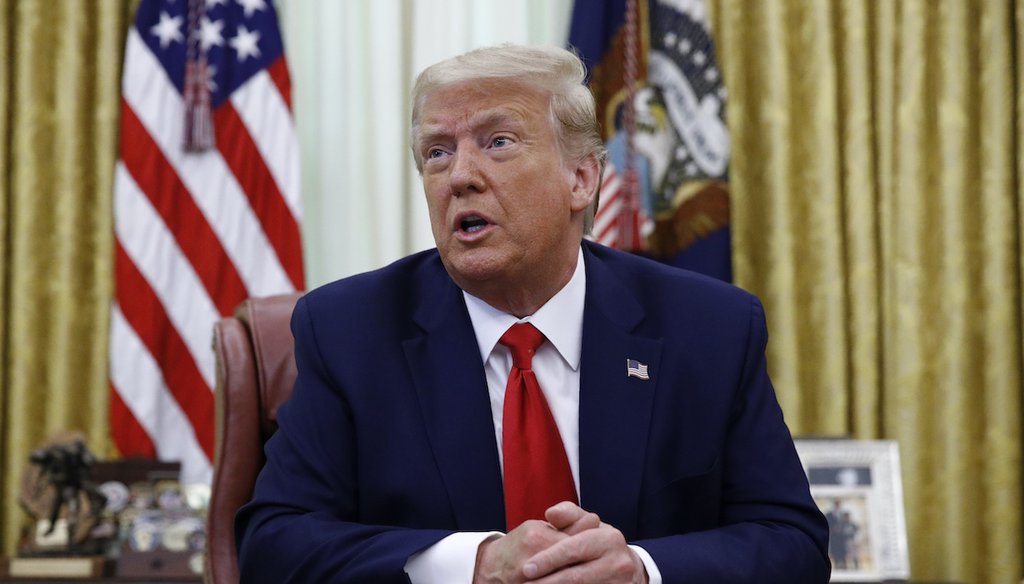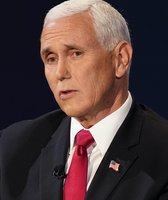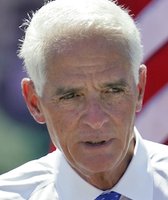Stand up for the facts!
Our only agenda is to publish the truth so you can be an informed participant in democracy.
We need your help.
I would like to contribute

President Donald Trump in the Oval Office of the White House, on July 15, 2020. (AP)
Donald Trump’s campaign promise to build a wall on the U.S.-Mexico border was vintage Trump: controversial, huge, symbolic. But he also meant a real wall.
"I would build a great wall, and nobody builds walls better than me, believe me, and I'll build them very inexpensively," Trump said when he launched his campaign for the White House. "I will build a great, great wall on our southern border. And I will have Mexico pay for that wall."
Trump’s passionate supporters loved when he made that promise in 2015 and applaud that he’s talked about the wall through the three and half years of his presidency. If they judge him on changing the conversation in Washington on immigration, the president definitely achieved that.
RELATED: Browse 102 campaign promises individually rated on the Trump-O-Meter
But Trump’s election didn’t result in an actual wall being built. Trump couldn’t get Congress to pass legislation that would have addressed costs or logistics of an actual wall. Mexico’s leaders rejected Trump’s rhetorical demands to pay for it. And it’s unclear that the Trump administration has the ability, money or time to complete such a complex project.
The Trump administration was able to reinforce and rebuild about 200 miles of fencing and barriers — some of it existing before he took office. Trump has repeatedly referred to these efforts as building a wall along the 2,000 mile border. But this most repeated of his campaign promises is largely unfulfilled. Compared with before Trump took office, the numbers of people apprehended crossing the U.S. Mexican border were down in 2017 and 2018, then increased dramatically in 2019 as families in Central America fled crime and other instability. Crossings are down this year, most likely due to the coronavirus pandemic.
As Trump reaches the fourth anniversary of being nominated as the GOP’s candidate for president, PolitiFact offers an account of the progress on 102 promises he made in the 2016 campaign. Our Trump-O-Meter promise tracker finds that roughly 49% of Trump’s promises can be described as either broken or not achieved.
Among Trump’s Broken Promises were to establish the right to carry a concealed weapon in all 50 states; invest $550 billion in infrastructure; repeal Obamacare, and end birthright citizenship.
Trump’s unfulfilled campaign promises are broken most often because he would have needed to change laws to achieve his goals but was unable to get action through Congress. (PolitiFact rates campaign promises based on outcomes, not intentions or effort.)
Our tracking project — which we have done for 11 years including the promises of President Barack Obama and more than two dozen governors and mayors — shows Trump kept roughly 24% of his promises. Typically he achieved progress when he could act on his own without Congress or the promise didn’t require complex administrative action. As promised, he took no salary for his presidency. He began the withdrawal of the United States from the Paris climate agreement. He rolled back regulations. He refused to say "Happy Holidays" instead of "Merry Christmas."
His most substantial kept promise: cutting taxes. When Republicans controlled both chambers of Congress in 2017, they passed a wide-ranging bill that lowered taxes for many people and businesses. Trump’s promises on taxes were ambitious, and he didn’t get everything he wanted in the tax law. But he got enough to earn ratings of Compromise on his tax promises to eliminate the marriage penalty (it was reduced but not eliminated), lower the business tax rate to 15% (it was lowered to 21%), eliminate the estate tax (also reduced but not eliminated) and cut taxes for "everyone."
With roughly five months left in Trump’s term, PolitiFact has rated Trump’s remaining promises Compromise (about 20%) or Stalled (5%). At a similar point in 2012, Obama’s promises were rated Promise Broken at 16%, Promise Kept at 37%, Compromise at 14%, and the rest Stalled (10%) or In the Works (22%).
How much will Trump’s policy success or failure matter as voters go to the polls? The coronavirus pandemic has changed the political equation for answering that question. The coronavirus pandemic arrived unexpectedly in the final year of Trump’s first term. It is a wild card in assessing his record, given its most direct impact on the day-to-day lives of Americans.
Nevertheless, Trump had three years to achieve his campaign promises before the pandemic. He may yet move more legislation through Congress to address that and other issues. PolitiFact will be updating promise ratings as circumstances warrant. Prior to the Trump-O-Meter, PolitiFact tracked former President Barack Obama’s campaign promises for eight years on The Obameter. Obama’s final tally was 24% of his promises rated Promise Broken; 48% promises rated Promise Kept, while another 28% of his promises were part of a Compromise.
Trump scored legislative victories with the passage of his tax bill, an increase in defense spending, and, with the backing of many Democrats, a criminal justice overhaul.
Trump has also managed to win confirmation of judges at an unusually fast clip, thanks to strong support from Senate Majority Leader Mitch McConnell, R-Ky. Trump signed massive spending bills and coronavirus relief packages, which had bipartisan support.
He has not succeeded in his promise to repeal and replace Obamacare, even when his party controlled both chambers of Congress. The Trump administration has not forwarded a repeatedly promised infrastructure bill to Congress. And, even before the enormous outlays required by the pandemic, his promise to cut domestic spending did not happen.
Much like his predecessor,Trump faced obstacles in working with Congress due to intense partisan polarization. But experts suggested he has fueled those very partisan fires that inhibit his own agenda.
"We have not had a president so distant from the legislative process as Trump since at least the 1920s," said Steven S. Smith, a political scientist at Washington University in St. Louis.
Trump tended to punch back against even modest deviations from his position. "He has mean-tweeted virtually every congressional leader at some point," said Gregory Koger, a University of Miami political scientist.
Like Obama, Trump has made stronger use of his executive powers, which don’t require the agreement of Congress. Trump has been able to make progress on his environmental agenda by rolling back the actions of his predecessor through executive orders and regulations, rather than winning legislative votes.
"But as for regulatory changes and executive orders, what one president can do, the next president can undo," said John J. Pitney, Jr., a Claremont McKenna College political scientist and author of "Is Congress Broken?"
This means that if Joe Biden wins the 2020 presidential election, he would be able to overturn many of Trump’s policies on immigration, the environment, and climate change, among other issues.
Any president has the tools to put their mark on foreign policy, and Trump has done so. Some of his biggest foreign policy promises were kept: pulling out of the Iran nuclear agreement, leaving the Paris climate accord, quitting the Trans-Pacific Partnership trade deal, renegotiating the North American Free-Trade Agreement, providing strong backing for Israel including moving the U.S. Embassy to Jerusalem, and curtailing the Obama-era thaw with Cuba.
RELATED: Our only agenda is to publish the truth so you can be an informed participant in democracy. Donate today.
Some of these moves will be hard to reverse, while others could be changed by a Democratic administration.
Some say the biggest impact from Trump’s approach may be intangible. "The area that may be irreversible is American leadership in the world," Pitney said. "We have made our allies wary of American leadership during the Trump administration, and they are not likely to again accede to a U.S. leadership role that makes them vulnerable."
Then again, Trump had promised during his campaign to adopt an America First approach. He said he would build the wall on the U.S.-Mexico border, he demanded that U.S. allies pay us for more for their defense, he pledged to impose tariffs on trading partners, and he said he would keep out Muslims and immigration from terrorism-prone countries.
History may question the wisdom of these policies, but Trump’s rhetoric during the 2016 campaign gave clear signs that the rest of the world would find fault with some American policies on his watch. Dissatisfaction abroad with U.S. leadership under Trump suggests he has kept that promise.
PolitiFact reporter Miriam Valverde contributed to this report.
RELATED: Read more Trump-O-Meter reports on all 102 of President Donald Trump's 2016 campaign promises.
Our Sources
See promise updates for more sources
Email interview with Max J. Skidmore, political scientist at the University of Missouri-Kansas City and author of "Presidential Performance: A Comprehensive Review," July 14, 2020
Email interview with Bert Rockman, Purdue University political scientist and author of "Presidential Leadership: The Vortex of Power," July 13, 2020
Email interview with John J. Pitney, Jr., Claremont McKenna College political scientist and author of "Is Congress Broken?" July 13, 2020
Email interview with Steven S. Smith, political scientist at Washington University in St. Louis, July 13, 2020
Email interview with Gregory Koger, University of Miami political scientist, July 13, 2020


















































